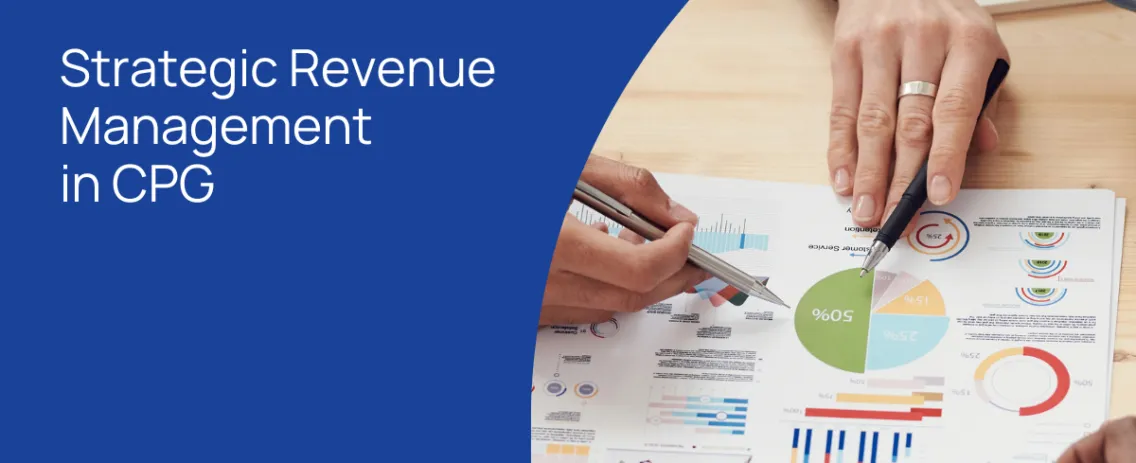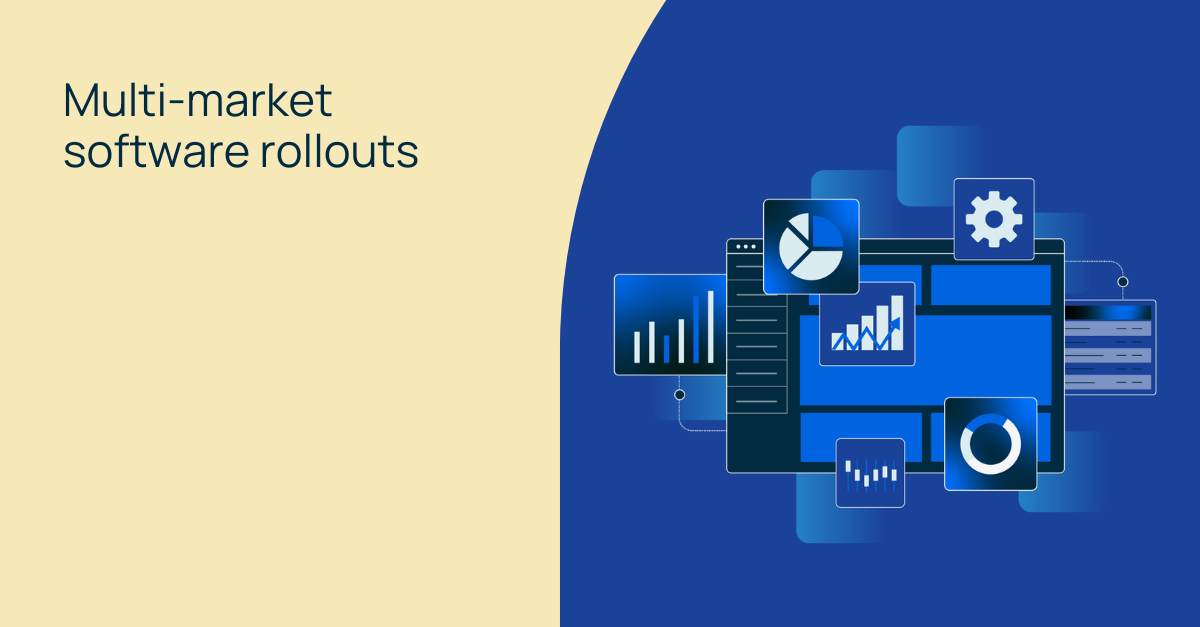
Strategic revenue management in CPG: The key to reliable business growth
In recent years, the landscape of consumer-packaged goods (CPG) has evolved, with companies enhancing their grasp on the basics of revenue growth management (RGM): pricing strategies, promotional tactics, product assortment, and trade spend. This has enabled consumer goods manufacturers to consistently realize value. But as new challenges emerge, the barriers to success become higher, highlighting the need for more strategic revenue management in CPG.
Shifts in consumer behavior demand that CPG companies stay agile and responsive. Advancements in data analytics provide a wealth of insights, but only if harnessed correctly. Moreover, the competitive landscape is more intense than ever, with companies vying for market share and consumer loyalty.
But perhaps the most compelling argument for robust RGM strategies comes from the changing dynamics of power. Retailers now wield more influence, setting new expectations for CPG companies. Shareholders are looking for evidence of strategic foresight and adaptability. The market itself is also a whirlwind of change, with global disruptions ranging from post-pandemic shopper behavior changes to supply chain uncertainty, the rise of omnichannel, and the cost-of-living crisis. These factors underscore the need for CPG companies to not just react, but proactively manage revenue growth with strategic finesse.
In this blog post, we’ll explore the intricacies of strategic revenue management and its pivotal role in navigating the CPG sector’s challenging landscape.
Beyond the basics: Redefining the RGM playbook in CPG
Traditionally, RGM practices in CPG focused on four key areas: pricing, promotions, assortment, and trade investments. These elements were the bedrock of revenue planning, enabling companies to capture value and drive sales. However, the industry landscape has shifted dramatically, and these traditional practices, while still foundational, have now become baseline expectations. They are no longer the competitive differentiators they once were.
In today’s market, consumer goods companies must go beyond these basics to stand out. The rise of digital technologies, advanced data analytics, and changing consumer behaviors have undeniably raised the bar for what constitutes effective RGM in CPG. Moreover, manufacturers now need to employ more sophisticated methods that integrate deep data analysis, predictive modeling, and advanced forecasting to stay ahead. This strategic approach to revenue growth management in CPG is essential for adapting to market changes and meeting the heightened expectations of stakeholders and consumers alike.
Revenue growth management in CPG: It’s time to get strategic
Strategic revenue growth management is an integrated approach that shapes a CPG company’s overall commercial strategy, not just sales tactics. It’s a longer-term and more holistic method that leverages deep insights. In doing so, it enables to make granular choices about what materials to prioritize and which initiatives to focus on. In today’s rapidly evolving market, strategic RGM is crucial for adapting to changes and achieving sustainable growth.
Unlike traditional RGM, which was tactical – focused on immediate adjustments like pricing and trade investments – strategic RGM is about shaping the company’s future. It’s built on sophisticated data analyses from various sources, providing a comprehensive view of opportunities. This approach helps in understanding the category structure and identifying the most attractive revenue and profit pools, as well as recognizing how they’re evolving. It also involves analyzing competitors, understanding consumer and shopper behaviors, identifying usage occasions, and evaluating channels and customers.
In essence, strategic revenue growth management in CPG/FMCG is about anticipating market shifts and consumer trends to make informed decisions that drive long-term growth. It’s not just about reacting to the market. It’s in fact about proactively setting a course that ensures the company’s relevance and success in the future. This integrated approach is now more important than ever, as traditional RGM practices have become the standard expectation, and companies must innovate to differentiate themselves.

Strategic revenue growth management: The blueprint for long-term success in CPG
The key components of strategic RGM include:
- Insight generation: The foundation of strategic Revenue Growth Management (RGM) lies in the continuous and reliable analysis of a CPG’s profit and growth drivers. Beyond one-off reports, a sophisticated method integrates deep data analysis to provide a clear and ongoing understanding of performance metrics. This approach ensures a detailed comprehension of market categories, consumer behaviors, competitor actions, and channel dynamics, leveraging both primary and secondary data sources. Such integration is vital for transcending a fragmented view of the market. Because it enables companies to pinpoint growth opportunities, comprehend consumer segments, and monitor competitor strategies effectively. These insights are not just snapshots but a consistent, transparent lens through which informed decisions can be made, aligning with both market demands and consumer needs.
- Decision-making: The insights gathered are then used to make strategic decisions about product portfolio, pricing strategies, and promotions. This involves tailoring offerings to meet the specific needs of different consumer segments. It also means responding to market demands in a way that maximizes revenue growth. It’s about making choices that are not just beneficial in the short term but also contribute to the company’s long-term goals.
- Long-term planning: A strategic approach to revenue growth management requires a long-term perspective. In any case, it must allow CPG companies to build plans that look beyond immediate market conditions. This long-term planning is then balanced with the agility to adapt quickly to significant market changes. By doing so, companies can ensure they are not just reacting to the market but proactively shaping their future in the industry.
These components all work together to create a robust RGM strategy. A strategy that drives steady growth and ensures that CPG companies remain competitive in a rapidly changing market environment.
From tactics to strategy: Implementing strategic RGM for future-proof growth
Implementing strategic revenue management in CPG requires a thoughtful transition from traditional practices to a more integrated framework. Here’s how companies can make this shift:
Transition steps:
- Assess current RGM practices: Begin by evaluating existing RGM tactics and their effectiveness. This will serve as the baseline for the transition
- Develop a holistic view: Shift the focus from isolated tactics to a comprehensive strategy that encompasses all aspects of the business
- Set clear objectives: Define what strategic RGM means for your company, including long-term goals and how they align with the overall business strategy
- Build cross-functional teams: Ensure collaboration across departments to integrate insights and strategies effectively
- Invest in training: Educate teams on the importance of a strategic approach and how to implement it
- Pilot and scale: Start with a pilot project to test the strategic RGM framework. Then scale up based on learnings and successes
By incorporating software tools into each step, companies can ensure a more effective and efficient transition to strategic RGM practices.
The role of technology:
Investing in advanced analytics and technology is essential for enhancing RGM capabilities. Because these tools provide the precision needed for effective execution by:
- Enabling deep data analysis: Technology facilitates the analysis of large datasets to generate actionable insights. The right solution automates the integration of all relevant data sources. It will, therefore, unlock their full potential and ensure that insights are derived from a comprehensive, unified view.
- Leveraging ML/AI: Machine learning and artificial intelligence technologies enhance forecasting precision through advanced pattern recognition and continuous learning.
- Automating processes: Automation helps streamline RGM processes, making them more efficient and less prone to error. It significantly reduces time spent on tasks and brings together different types of data. It also makes work infinitely more interesting by freeing people from repetitive tasks.
- Supporting decision-making: Advanced analytics tools can model various scenarios, helping leaders make informed strategic decisions.
- Tracking performance: Technology provides real-time monitoring of RGM initiatives, allowing for quick adjustments as needed.
By following these steps and leveraging technology, companies can successfully implement strategic revenue growth management, positioning themselves for long-term success in the competitive CPG landscape.

Charting the course: a conclusion on strategic RGM and the path forward
In the dynamic CPG market, the necessity to adapt and enhance RGM practices is not just beneficial. It is simply imperative for maintaining competitiveness. As market dynamics shift and consumer behaviors evolve, companies that cling to traditional RGM methods risk falling behind. Strategic revenue growth management is the beacon that guides CPG/FMCG companies through the complexities of today’s market. It also equips them with the tools necessary for effective joint business planning and negotiations with retailers. This strategic approach ensures that companies are not only prepared to address current challenges but are also well-positioned for future success and growth.
CPG companies looking to stay ahead of the curve should consider how Visualfabriq can support their strategic RGM efforts. With cutting-edge solutions tailored specifically for the CPG industry, Visualfabriq empowers companies to unlock key aspects of strategic revenue management. To see these solutions in action and understand how they can transform your RGM practices, we encourage you to book a demo. Embrace the change, and let Visualfabriq be your partner in driving sustainable, long-term growth.
This concludes our exploration of strategic RGM. In brief, the journey from traditional methods to a strategic framework is not just a shift in tactics. You should view it as a complete realignment of business philosophy. It’s in fact a commitment to innovation, precision, and foresight – the hallmarks of a market leader in the CPG industry.


.png)
.png)